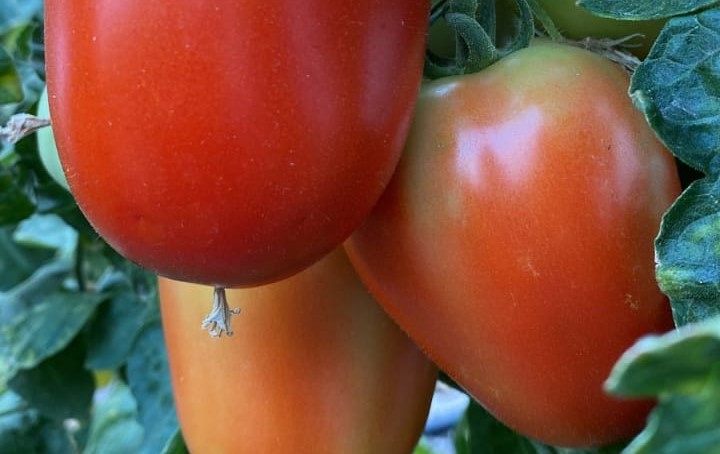Application of organic inputs and their effect on quality variables of tomato fruit
Keywords:
organic fertilizers, color, maturity stageAbstract
Tomatoes are a vegetable in high demand worldwide. Mexico has a 25.11% share of the international market. Tomatoes can be produced using organic fertilizers that improve soil characteristics and provide nutrients to plants. The objective of this research was to evaluate the effect of organic fertilizers on quality variables in tomato fruit during its maturity stage. The methodology consisted of preparing bocashi and the biol was acquired from a pig farm. The treatments applied were BL: Biol; BCS: bocashi; BLBCS: Biol + bocashi, at the time of harvest 30 fruits were collected at random for each treatment, the color, weight, polar and equatorial diameter of each one were measured. The results show that the smallest fruits were obtained with the biol treatment and in terms of color no statistical difference was observed between the treatments. Finally, it is concluded that the application of bocashi and the combination of this with biofertilizer favors a larger size and weight of the fruit. On the other hand, organic fertilizers do not influence the color of the fruit. However, biofertilizer applied in high concentrations causes a negative effect on these variables.
http://dx.doi.org/10.37114/abaagrof/2025.2
e2024-33
https://www.youtube.com/watch?v=Xjlx65RdruE
References
Adame García J, Murillo Cuevas FD, Cabrera Mireles H, Villegas Narváez J, Rivera Meza AE, Vásquez Hernández A. 2022. Efecto de bioestimulantes microbianos en el tamaño y peso de frutos de chile morrón y jitomate en condiciones protegidas de macrotúnel. Biotecnia. 25(1):81-87. https://doi.org/10.18633/biotecnia.v25i1.1772
Benito-Bautista P, Arellanes-Juárez N, Pérez-Flores ME. 2015. Color y estado de madurez del fruto de tomate de cáscara. Agronomia mesoamericana: organo divulgativo del PCCMCA, Programa Cooperativo Centroamericano de Mejoramiento de Cultivos y Animales. 27(1):115. https://doi.org/10.15517/am.v27i1.21891
Boudet Antomarchi A, Boicet Fabré T, Durán Ricardo S, Meriño Hernández Y. 2017. Efecto sobre el tomate (Solanum lycopersicum L.) de diferentes dosis de abono orgánico bocashi en condiciones agroecológicas. Centro agrícola. 44(4):37-42.
http://scielo.sld.cu/scielo.php?script=sci_arttext&pid=S0253-57852017000400006
Carvajal-Mena N, Medina-Correa R, Quintana R, Shene C, Leiva-Vega J. 2023. Effect of a turmeric-based fertilizer on tomato production at green-house level. Agro sur. 50(3):1-13. https://doi.org/10.4206/agrosur.2022.v50n3-01
Dinu M, Soare R, Dumitru M. 2017. The effect of foliar fertilization with organic products on some nutritional value during post-harvest storage of tomatoes (Lycopersicon esculentum Mill). Archivos Latinoamericanos de Nutrición. 67(3):218-226.
González del Cid K, Vásquez-de Ponce P, Sánchez-Gómez K, Tejada-Asencio J, Aguirre-Castro C. 2021. Evaluación de cuatro dosis de biofertilizante líquido enriquecido con sales minerales y su efecto en el rendimiento del cultivo de tomate (Lycopersicon esculentum, CENTA Cuscatlán), utilizando la técnica de fertirriego. Revista Agrociencia. 4(18):78-88. https://www.agronomia.ues.edu.sv/agrociencia/index.php/agrociencia/article/view/89
León K, Mery D, Pedreschi F, León J. 2006. Color measurement in L∗a∗b∗ units from RGB digital images. Food Research International. 39(10):1084-1091.
https://doi.org/10.1016/j.foodres.2006.03.006
López Camelo AF, Gómez PA. 2004. Comparación de índices de color para la maduración del tomate. Horticultura Brasileira. 22(3):534-537.
https://doi.org/10.1590/S0102-05362004000300006
López-Morales ML, Leos-Escobedo L, Alfaro-Hernández L, Morales-Morales AE. 2022. Impacto de abonos orgánicos asociados con micorrizas sobre rendimiento y calidad nutraceútica del pepino. Revista mexicana de ciencias agrícolas. 13(5):785-798. https://doi.org/10.29312/remexca.v13i5.2868
Montaño Méndez IE, Valenzuela Patrón IN, Villavicencio López KV. 2021. Competitividad del tomate rojo de México en el mercado internacional: análisis 2003-2017. Revista mexicana de ciencias agrícolas. 12(7):1185-1197.
https://doi.org/10.29312/remexca.v12i7.2531
Muñiz Veliz CA. 2023. Beneficios del biol en el cultivo de pepino (Cucumis sativus). Bachelor's thesis, BABAHOYO: UTB, 2023.
http://dspace.utb.edu.ec/handle/49000/14100
Padrón Pereira CA, Padrón León GM, Montes Hernández AI, Oropeza González RA. 2012. Determinación del color en epicarpio de tomates (Lycopersicum esculentum Mill.) con sistema de visión computarizada durante la maduración. Agronomía Costarricense. 36(1):97-111. https://www.scielo.sa.cr/scielo.php?script=sci_arttext&pid=S0377-94242012000100008
Peralta Antonio N, Bernardo de Freitas G, Watthier M, Silva Santos R. 2019. Compost, bokashi y microorganismos eficientes: sus beneficios en cultivos sucesivos de brócolis. Idesia (Arica). 37(2):59-66.
https://dx.doi.org/10.4067/S0718-34292019000200059
Restrepo J. 2001. Elaboración de abonos orgánicos fermentados experiencias de agricultores en Centroamérica y Brasil. Instituto Interamericano de Cooperación para la Agricultura (IICA). Costa Rica. Pp. 189. ISBN: 92-9039-506-0.
http://repositorio.iica.int/handle/11324/6568
Restrepo J. 2002. Biofertilizantes preparados y fermentados a base de mierda de vaca: preguntas directas, respuestas prácticas. Cali, CO, Fundación Juquira Candiru. Pp. 105. https://agroecologa.org/wp-content/uploads/2016/12/ABC-de-la-Agricultura-organica-Abonos-organicos.pdf
Sarmiento Sarmiento GJ, Amézquita Álvarez MA, Mena Chacón LM. 2019. Uso de bocashi y microorganismos eficaces como alternativa ecológica en el cultivo de fresa en zonas áridas. Scientia Agropecuaria. 10(1):55-61.
https://dx.doi.org/10.17268/sci.agropecu.2019.01.06
Toor RK, Savage GP, Heeb A. 2006. Influence of different types of fertilisers on the major antioxidant components of tomatoes. Journal of Food Composition and Analysis. An Official Publication of the United Nations University, International Network of Food Data Systems. 19(1):20-27. https://doi.org/10.1016/j.jfca.2005.03.003
Vásquez L. 2021. Efecto de tres dosis de biol en el rendimiento del cultivo de tomate sheila victory F1 (Solanum lycopersicum L.), bajo condiciones de invernadero en Baños del Inca - Cajamarca. Universidad Nacional de Cajamarca.
http://hdl.handle.net/20.500.14074/4381
Vázquez-Gálvez G, Cárdenas–Navarro R, Lobit P. 2008. Efecto del nitrógeno sobre el crecimiento y rendimiento de fresa regada por goteo y gravedad. Agric. Téc. Méx. 34:235-241. http://www.scielo.org.mx/scielo.php?script=sci_arttext&pid=S0568-25172008000200010&lng=es&tlng=es
Yam KL, Papadakis SE. 2004. A simple digital imaging method for measuring and analyzing color of food surfaces. Journal of Food Engineering. 61(1):137-142. https://doi.org/10.1016/s0260-8774(03)00195-x
Zhang J, Liu S, Zhu X, Chang Y, Wang C, Ma N, Wang J, Zhang X, Lyu J, Xie JA. 2023. Comprehensive evaluation of tomato fruit quality and identification of volatile compounds. Plants. 12, e2947. https://doi.org/10.3390/plants12162947

Downloads
Published
Issue
Section
License

This work is licensed under a Creative Commons Attribution-NonCommercial 4.0 International License.


